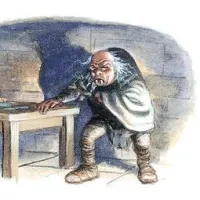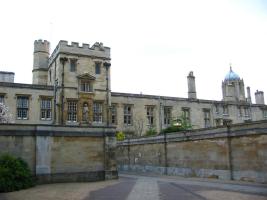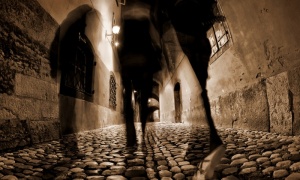Jerusalem syndrome is a mental disorder characterised by delusions, fantasies or other similar states of mind triggered by a visit to the city of Jerusalem. It is not endemic to one single religion or denomination but has affected Jews, Christians, and Muslims of many different backgrounds. The syndrome manifests itself in different ways. Sufferers could be convinced they are biblical figures, like Ronald Hodge who started referring to himself as the Messiah during his time in Israel. After turning 40 and experiencing the dissolution of his marriage, Hodge (who was given a pseudonym) turned to the Bible for comfort and embarked on a trip to Jerusalem. There, he began referring to himself as the Messiah and received treatment at Herzog Medical Centre in Jerusalem. Others may become obsessed with an idea or duty that they need to fulfill. In 2007, Dr. Pesach Lichtenberg, who was the head of men’s psychiatry at Herzog Medical Centr at the time, said many sufferers feel a relentless need to make the world better and they believe they have a messianic mission which they must fulfill. The most contentious point of debate among scholars of Jerusalem Syndrome is what one group of doctors has called Type III cases: people with no history of mental illness who become overwhelmed by the city’s religiosity and temporarily lose their minds.
Jerusalem syndrome has previously been regarded as a form of hysteria, referred to as “Jerusalem squabble poison”, or “fièvre Jerusalemmiene“. It was first clinically described in the 1930s by Jerusalem psychiatrist Heinz Herman, one of the founders of modern psychiatric research in Israel. Whether or not these behaviours specifically arise from visiting Jerusalem is debated, as similar behaviours have been noted at other places of religious and historical importance such as Mecca and Rome (see Stendhal syndrome). It is known that cases of the syndrome had already been observed during the Middle Ages, since it was described in the itinerary of Felix Fabri and the biography of Margery Kempe. Other cases were described in the vast literature of visitors to Jerusalem during the 19th century. The classic Jerusalem syndrome, where a visit to Jerusalem seems to trigger an intense religious psychosis that resolves quickly or on departure, has been a subject of debate in the medical literature. Most of the discussion has centred on whether this definition of the Jerusalem syndrome is a distinct form of psychosis, or simply a re-expression of a previously existing psychotic illness that was not picked up by the medical authorities in Israel.
It should be noted that, of the about three and a half million tourists who visit Jerusalem each year, at its height on average roughly only 100 such tourists with Jerusalem-themed mental problems were seen annually, 40 of them requiring admission to hospital. This was a spike in reported cases in the run-up to the millennium, but in an interview in 2011, an Israeli psychiatrist reported seeing only two or three cases a year since then. In popular culture, however, occurrences of Jerusalem syndrome have been far more noteworthy. In “Jerusalem” the twelfth story in Neil Gaiman’s 2015 collection, Trigger Warning, the lives of a British couple on holiday are transformed by the illness. In The Simpsons episode “The Greatest Story Ever D’ohed”, the Simpsons travel to Israel where Homer is struck with the Jerusalem syndrome. The illness and its effect on Homer is one of the plot’s central themes. Eventually, every cast member is overcome with Jerusalem syndrome, each one proclaiming that they are the messiah. In The X-Files episode “Revelations”, agents Scully and Mulder try to subdue a man afflicted with a form of Jerusalem syndrome. Perhaps most intriguingly of all, the catalogue of the Metropolitan Museum of Art’s 2016 show about an earlier era of the city’s history used the syndrome as the “organising metaphor” for the first paragraph of the introduction, per a review.
All of this would suggest that the phenomenon has become a curiosity, played for laughs even, but it is often disturbing and dangerous for those afflicted, many of whom are hospitalised. In 1969, Denis Michael Rohan, an Australian tourist, set fire to the al-Aqsa mosque, believing he was on a divine mission. His actions caused riots across the city. An Irish schoolteacher came to a Jerusalem hospital convinced she was about to give birth to the Baby Jesus when in fact she was not even pregnant. A Canadian tourist believed he was the Biblical strongman Sampson and tried to tear stone blocks out of the Wailing Wall. An Austrian man flew into a rage in his hotel kitchen when staff refused to prepare the the Last Supper for him. There have been men convinced they were Jesus or John the Baptist, and women believing they were the Virgin Mary. The specific religious focus of Jerusalem syndrome distinguishes it from other comparable phenomena, such as Stendhal syndrome in Florence or Paris syndrome for Japanese tourists. There is something about ancient Jerusalem, a disputed city that is so important to people of three faiths, that attracts – or perhaps even causes – a special kind of madness.

















Leave a comment